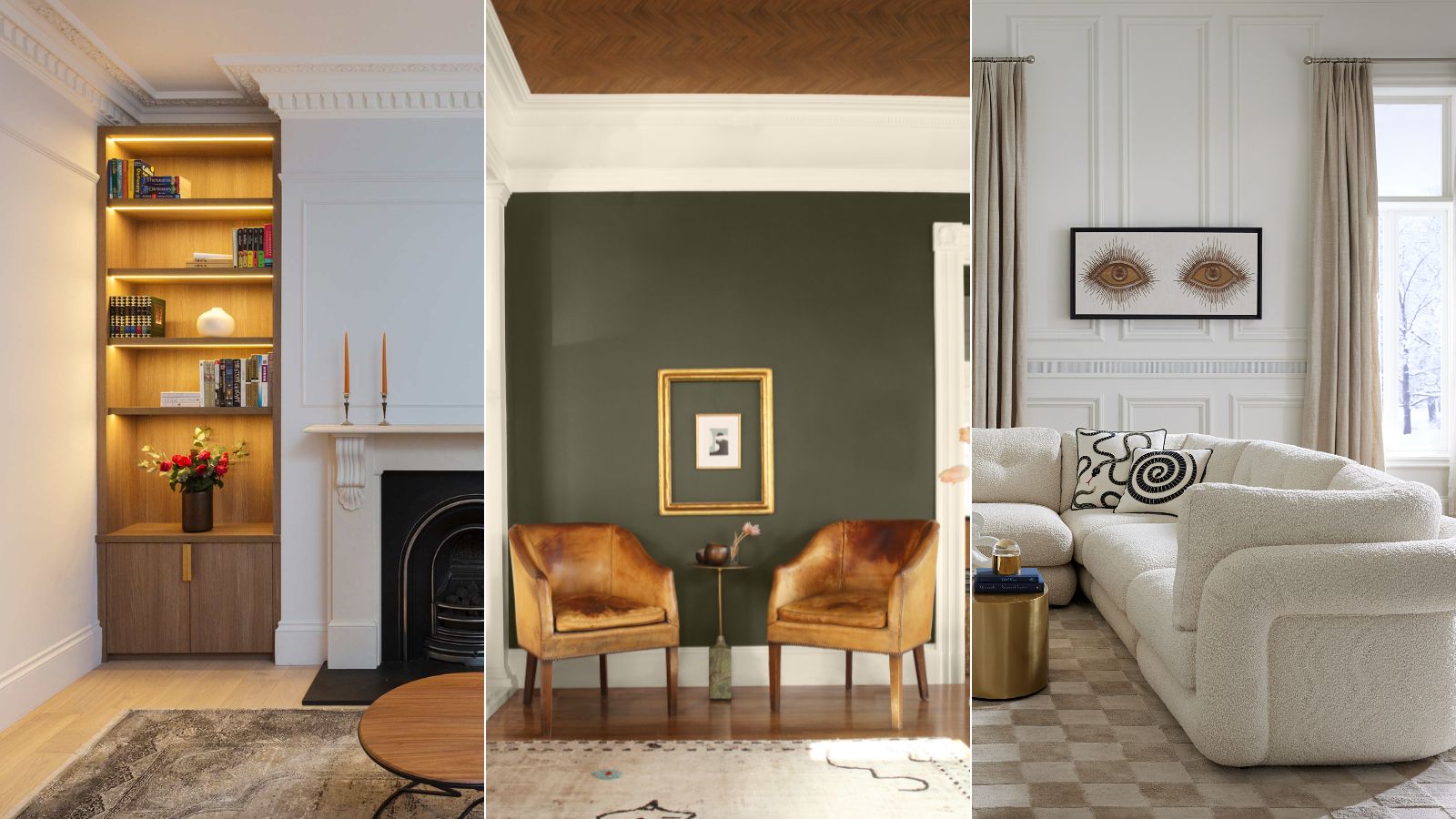
An Art Deco living room has enduring appeal – when designed and executed well, this style offers a balance of sophisticated style and bold design. Hailing from the early 1900s, Art Deco is an era and style that revolved around jazz, and the design elements offer a nod to its origins.
Today's interpretation of Art Deco style takes cues from the aesthetic, blended with components of other interior design styles. Instead of transforming your home into a shrine to the 20s and 30s, it's about tastefully infusing your space with Art Deco decor. Think elegant decadence, rich jewel tones, and metallic accents.
Creating an Art Deco living room that feels balanced and stylish is no easy feat. To offer some inspiration, we've asked interior designers to share how they would introduce this vintage-inspired design style into a living room scheme.
Art Deco living room ideas
Art Deco style is more than gold accents and bold, geometric designs. A living room should balance style and comfort, so consider these ideas before infusing Art Deco design into your space. After all, you want your space to feel inspired, not an imitation of the olden days!
1. Adorn walls with decorative paneling
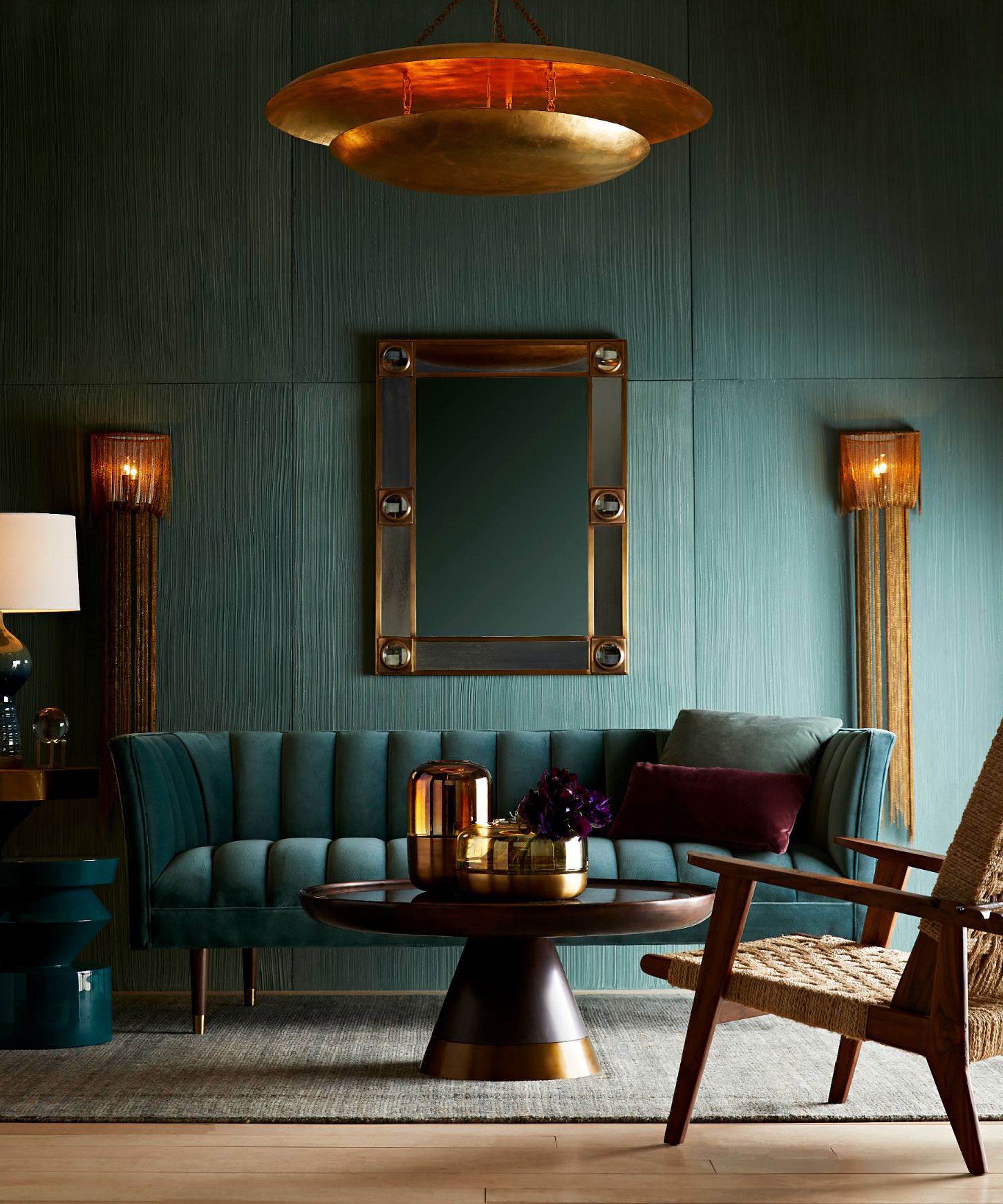
Most classic interior design styles have architectural details that feel core to the aesthetic. In an Art Deco living room, decorative wall paneling is a great way to introduce an err of decadence that feels on-trend.
'There are two ways to introduce Art Deco style into any room,' says Penny Drue Baird, principal at Dessins LLC. 'The first is architectural – you can add moldings, paneling, and other architectural features in woodwork or metal that incorporate the streamlined repetitive lines or zigzag features of the Art Deco period,' she explains.
Where a farmhouse or rustic style scheme might call for shiplap or wainscoting, Art Deco spaces require a design that feels more decorative. In this living room, textured rectangular wall paneling has been added on every wall and painted a deep teal shade. Paired with the amber accents, the living room scheme feels stylish and elegant while retaining a sense of coziness.
2. Padded furniture and upholstery
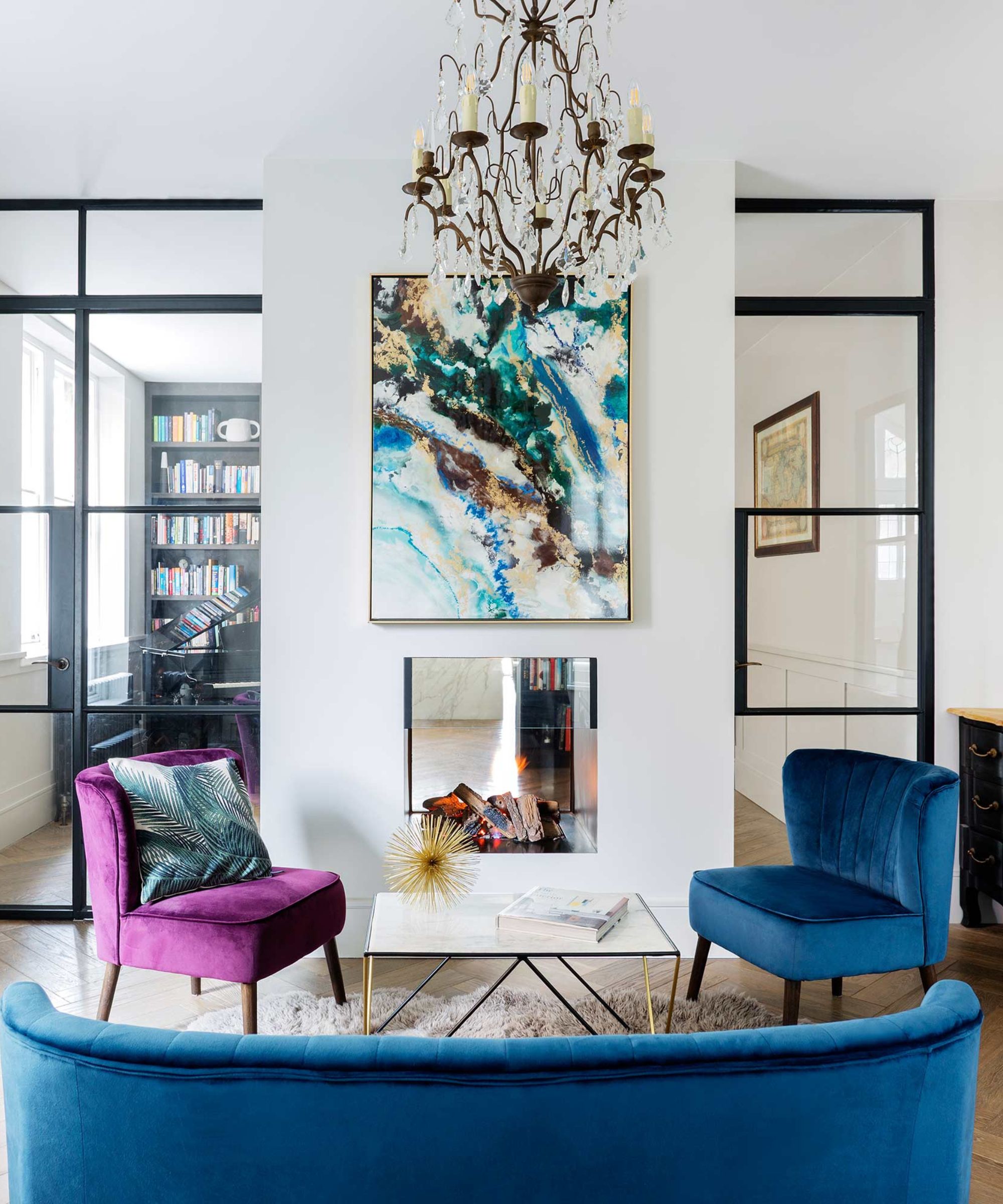
Art Deco design exudes a sense of luxury, so introducing furniture that looks high-end and feels comfortable is key. 'The second way to add Art Deco style would be in the soft furnishings themselves. Upholstery would feature channeled lines of padding, either vertical or horizontal or undulating concentric lines,' explains Penny Drue Baird.
'Case goods would be made from intricate inlays and decorative patterns, using precious materials, such as rare woods, galuchat (ornamented shagreen), fine bronze and brass metals, or mother of pearl, as examples. These pieces can be coffee tables, side tables, or cabinetry, such as cocktail bars or chests,' she adds.
3. Add geometric patterns
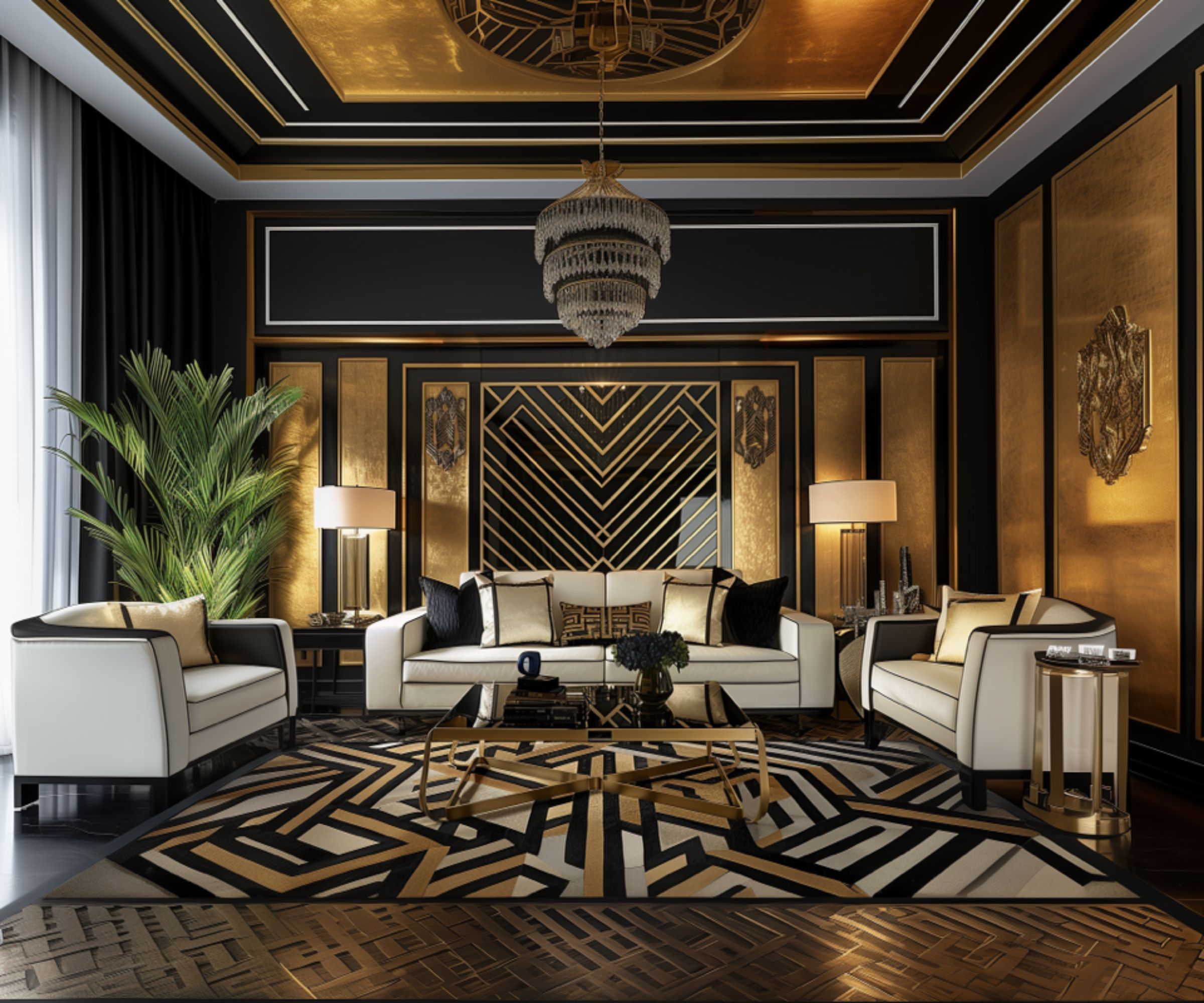
Geometric patterns and designs are something no Art Deco living room would be complete without. From wallpaper ideas and paneling to rugs and throw pillows, try to introduce a geometric design somewhere in the space as a nod to the design style.
'Introducing Art Deco into a living room involves incorporating geometric patterns through rugs or wallpapers, using sleek furniture with mirrored or lacquered finishes, and adding metallic accents like brass or chrome,' explains Juliette Thomas, director at Juliettes Interiors.
'Bold colors like black, white, and gold can be utilized, along with statement lighting fixtures and decorative accessories to evoke the era's glamour,' she adds. In this living room, a color palette of black, gold, and white has been used throughout, while geometric patterns have been added via the feature wall paneling and area rug.
4. Introduce art and sculptural decor
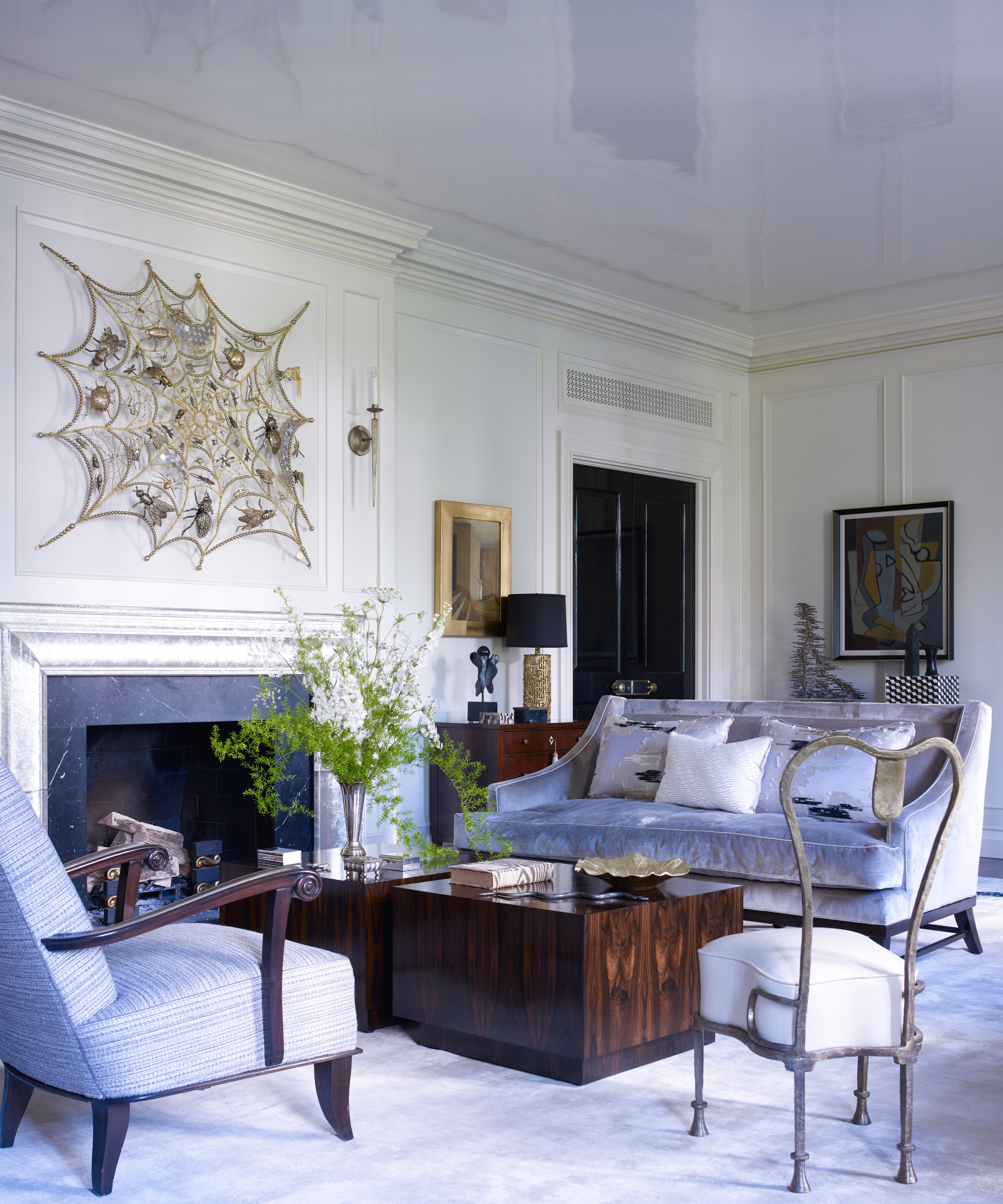
Although geometric patterns might be the first design element you think of when it comes to Art Deco design, there are other decorative details that offer a nod to the aesthetic.
'We like to incorporate patterned fabrics and rugs that have these hallmarks to style an Art Deco living room,' explains interior designer Jessica Lagrange, but adds that this is not the only way she introduces Art Deco style to a living room.
'Art and sculpture pieces are another way we like to incorporate the Art Deco element in a living room. With a contemporary approach to a traditional design, this adds an element to the space that truly stands the test of time,' says Jessica.
5. Opt for soft lighting
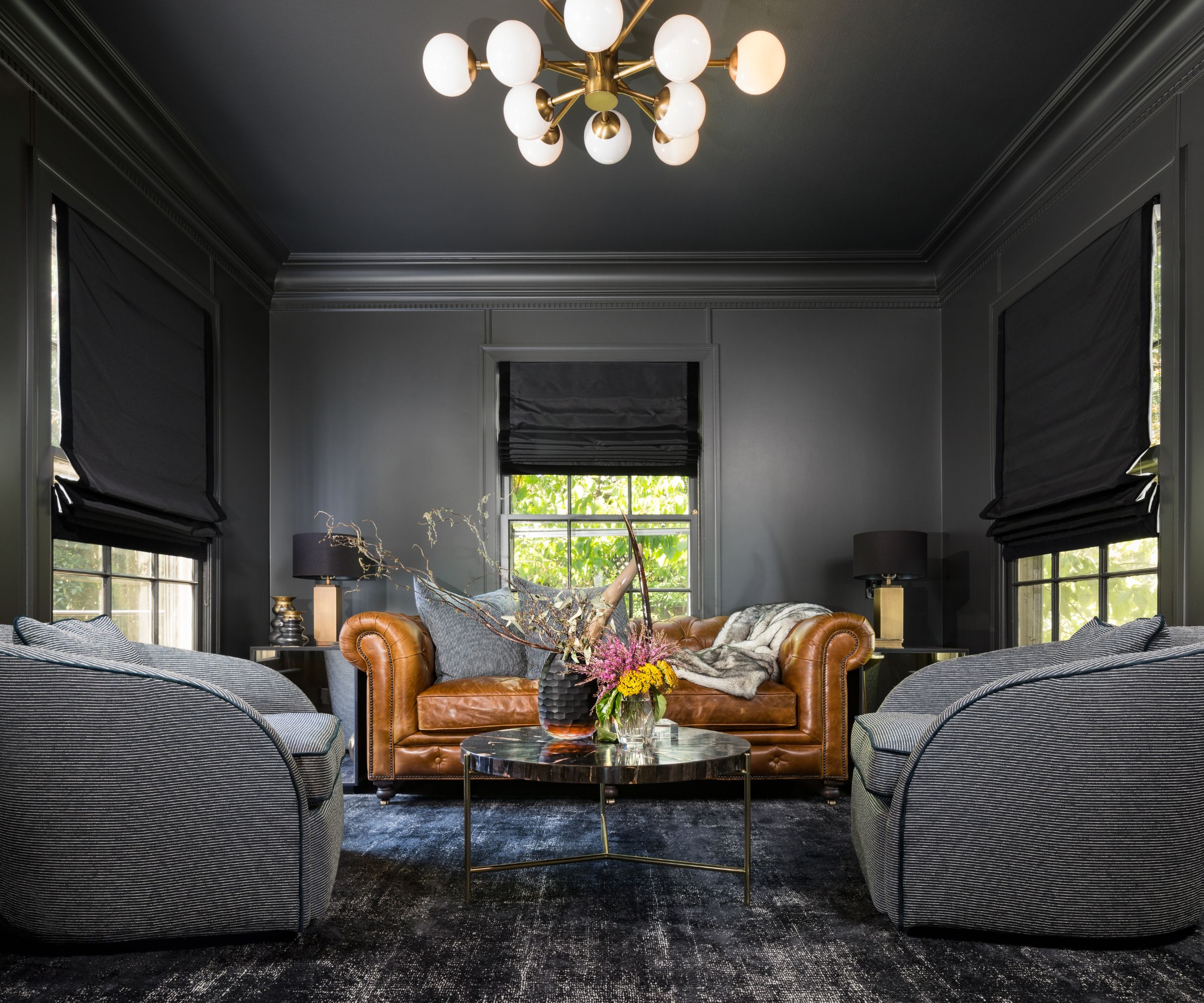
Living room lighting plays an important role in any style of space – in an Art Deco living room, lean towards softer lighting. Include brass sconces that cast the light down the walls, and ceiling lights that highlight the architectural details in a room.
'Lighting is key,' says Eddie Maestri, principal architect and creative director at Maestri Studio. 'The soft lit ceiling coves of Art Deco style are definitely back. Symmetry is key, as is statement lighting with period nods,' he adds.
In this Art Deco living room, symmetry has been introduced with the two bookcases, while soft downlighting in each shelf offers an ambient glow that feels core to Art Deco style.
6. Look for furniture with a curved profile
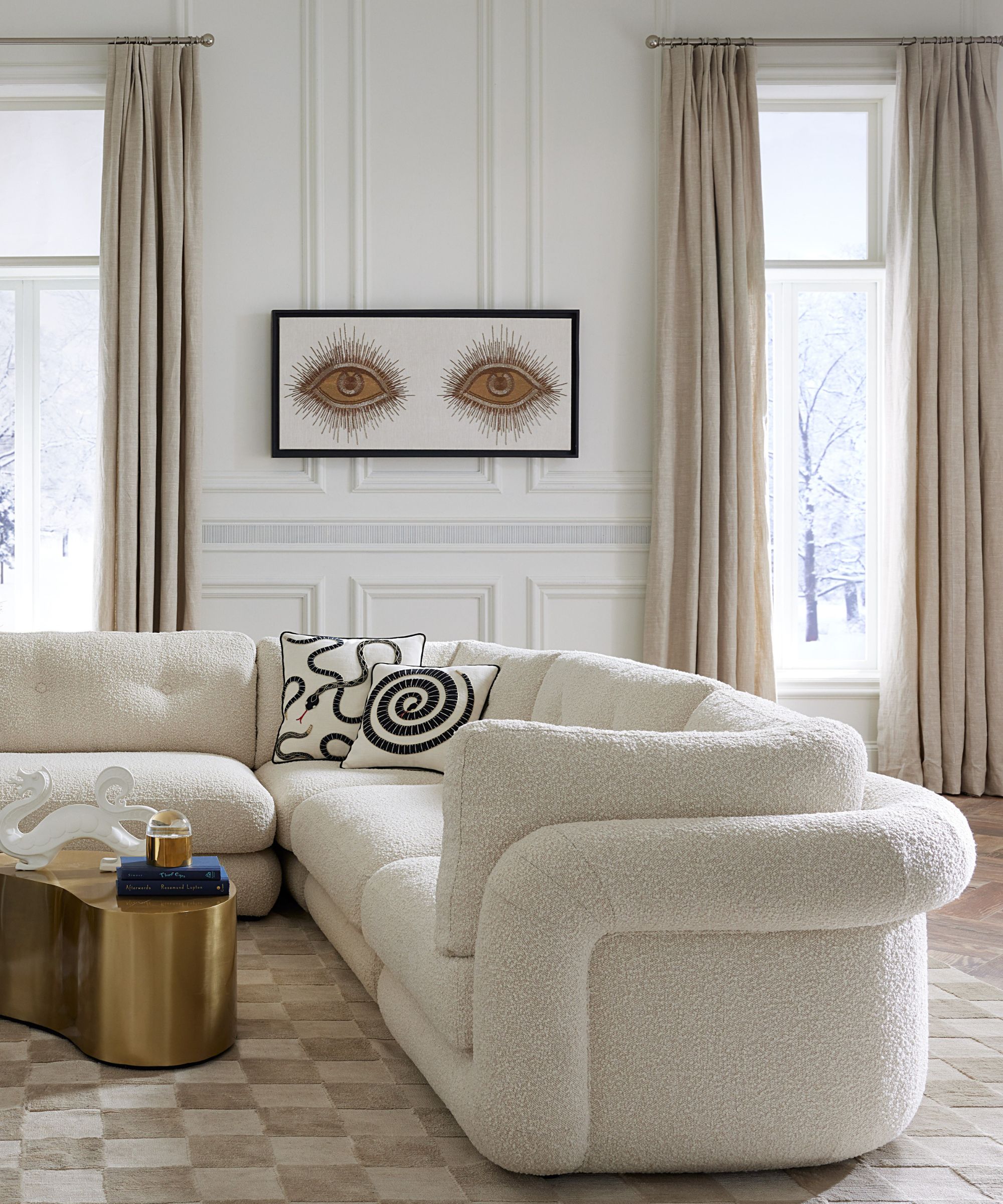
Living room designs rely on the furniture in them – from sofas and accent chairs to coffee tables and sideboards, they all play a big part when creating a successful scheme. As such, the furniture you introduce to an Art Deco living room can make all the difference to the overall aesthetic.
'As a trend centered around comfort, tactility, and exuberance, living rooms are the perfect space in the home to apply the Art Deco design style, and choosing the correct furniture pieces is key,' says interior designer Molly Woodward-Moor.
'With soft furnishings, look for curved shapes and stylized pieces in softer velvet-like materials and a pop of color. A sofa or accent chair in a rich ochre yellow, moss green or rust red creates a focal statement that exudes confidence. Avoid angular designs in rigid materials or leather finishes, that can feel cold, clinical, and uninviting,' she explains.
7. Decorate with green hues
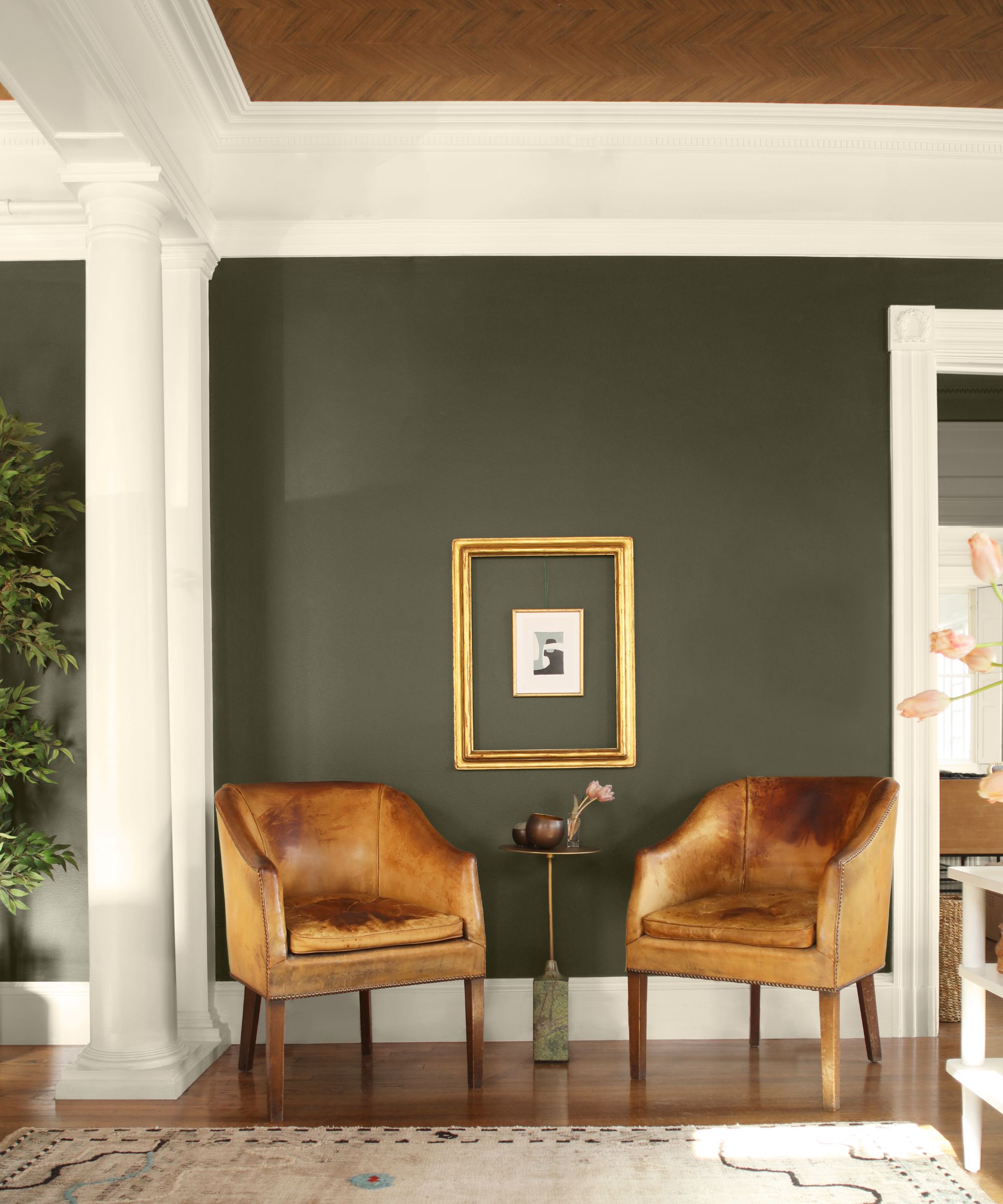
Art Deco style has a distinct color palette. Glamor and decadence are at its core, so decorate with jewel tones and deeper hues for a dramatic, yet elevated finish. 'Art Deco style is a sleek, but glamorous design style that often includes bold lines, intricate geometric patterns, high-gloss finishes, and saturated colors,' says Arianna Barone, Color Marketing Manager at Benjamin Moore.
'For a living room, consider bringing in lush green paint colors, like Boreal Forest AF-480 or Vintage Vogue 462, paired with warm metallic accents to play into the decadence of Art Deco design. For a subtle nod, consider painting built-ins or furniture in these handsome hues providing the perfect backdrop for gold and brass accessories. To fully embrace the opulence of this design style, use these colors on all four walls for maximum glam,' she adds.
8. Blend vintage charm with opulent style
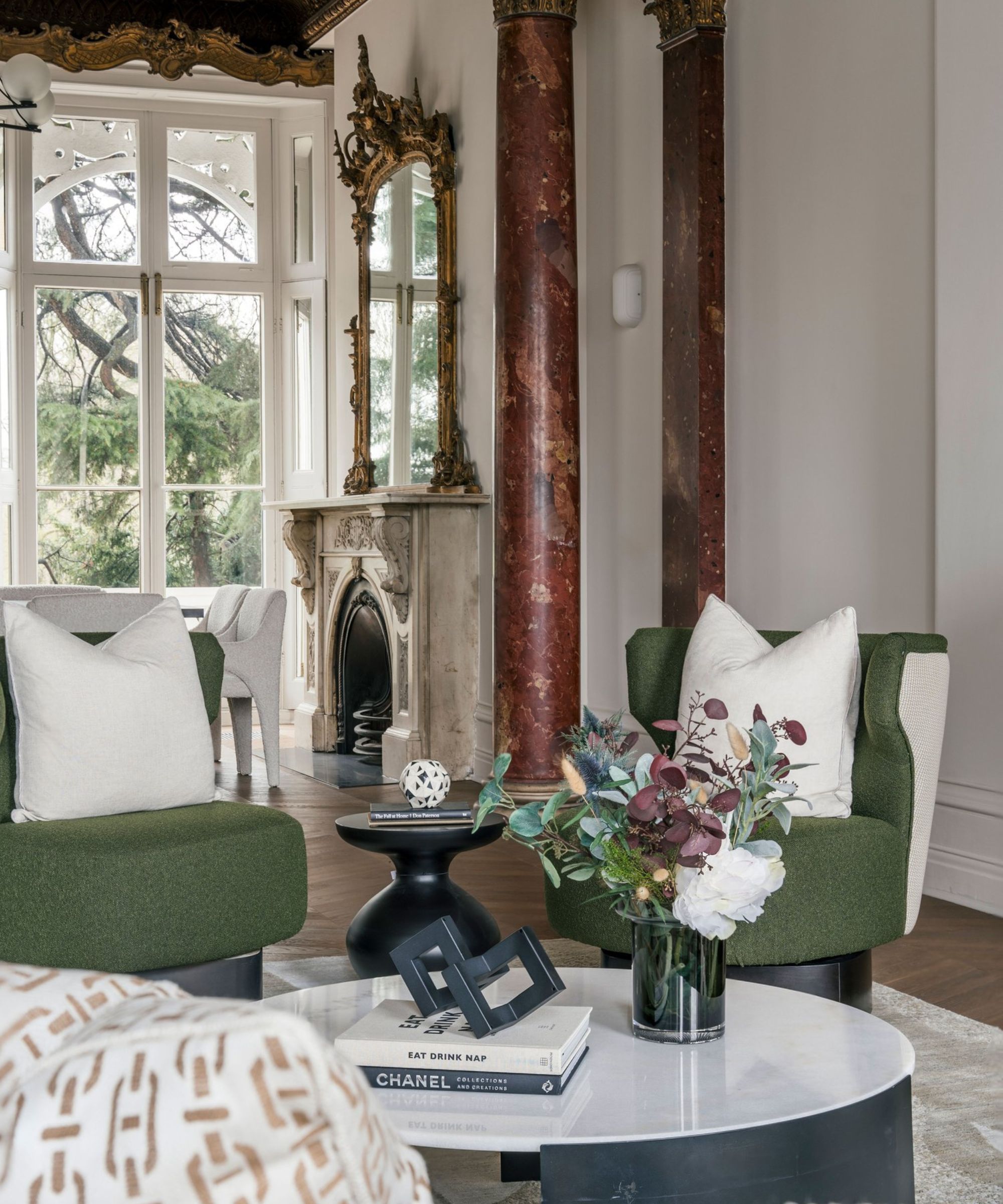
It will probably come as no surprise that a successful Art Deco living room is one that blends vintage pieces with those more opulent, decorative elements. This helps to prevent a scheme from feeling too new and shiny while offering a nod to the style's roots.
'Art Deco interior is all about having a touch of glamour alongside a vintage charm,' says Saffron Harper-Ward, interior designer at Knight Frank Interiors. 'Ways to include this style into your home include furniture with bold, geometric shapes and clean lines – polished surfaces, metal accents and luxurious upholstery in rich colors or patterns is a good starting point,' she adds.
Mixing different finishes and pairing contrasting tones can add the bold elegance this design style is renowned for – a dark color on the wall paired with shiny brass lighting or pairing light and moody hues is a great place to start. 'Adding dramatic lighting fixtures like chandeliers or sconces with geometric shapes and metal finishes to make a statement as well as painting the walls in deep, rich colors or opt for wallpaper with Art Deco patterns,' suggests Saffron.
When designing an Art Deco living room, prioritize creating a balance between a comfortable, cozy space and a sense of opulence and glamor. Opt for jewel tones and decorative paneling, curved silhouettes, and soft lighting. It's all about highlighting architectural details and designing a scheme that feels elegant and cohesive. Don't go overboard on the metallic pieces and introduce elements of vintage style – it's not Art Deco if you don't celebrate its roots.







